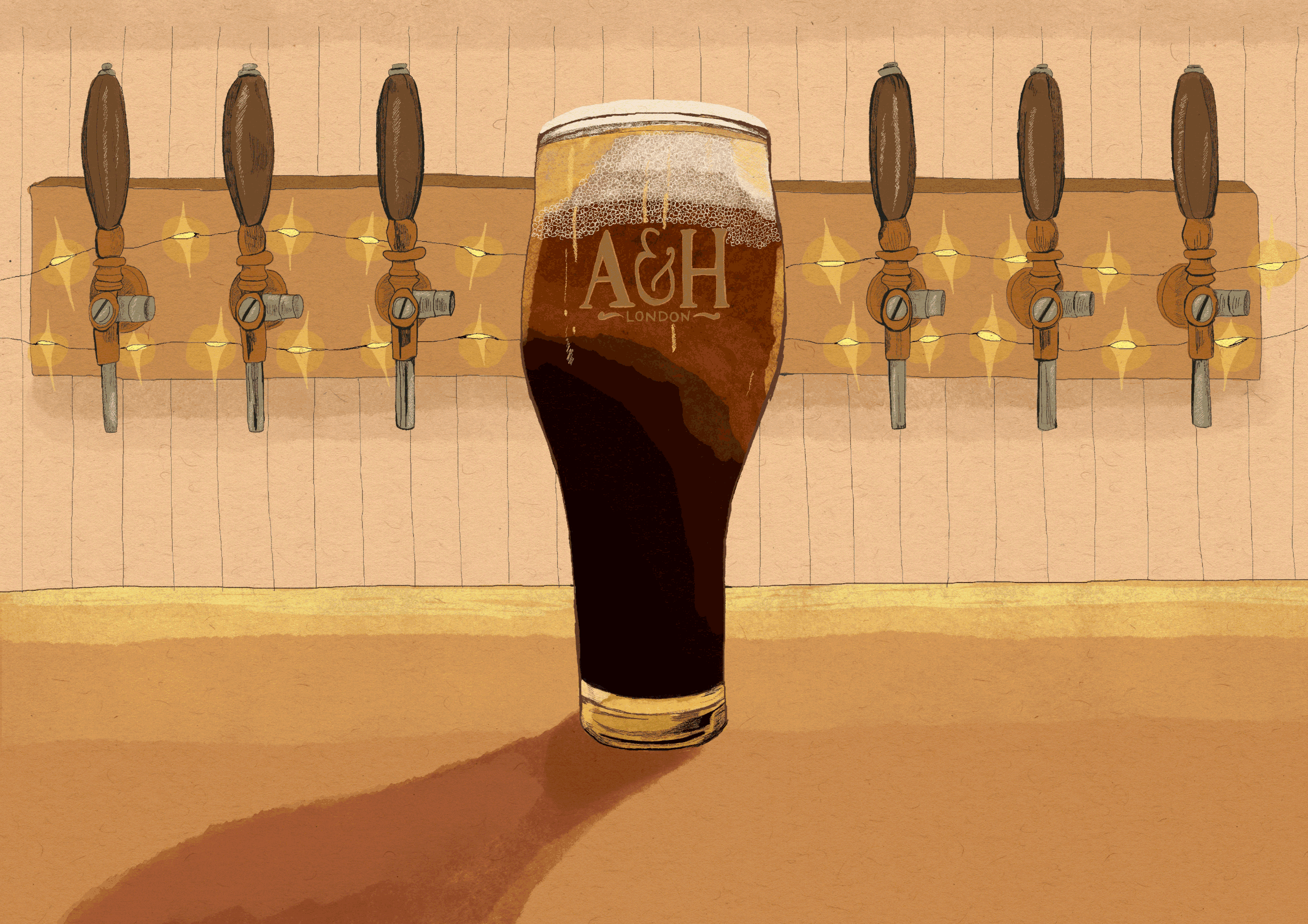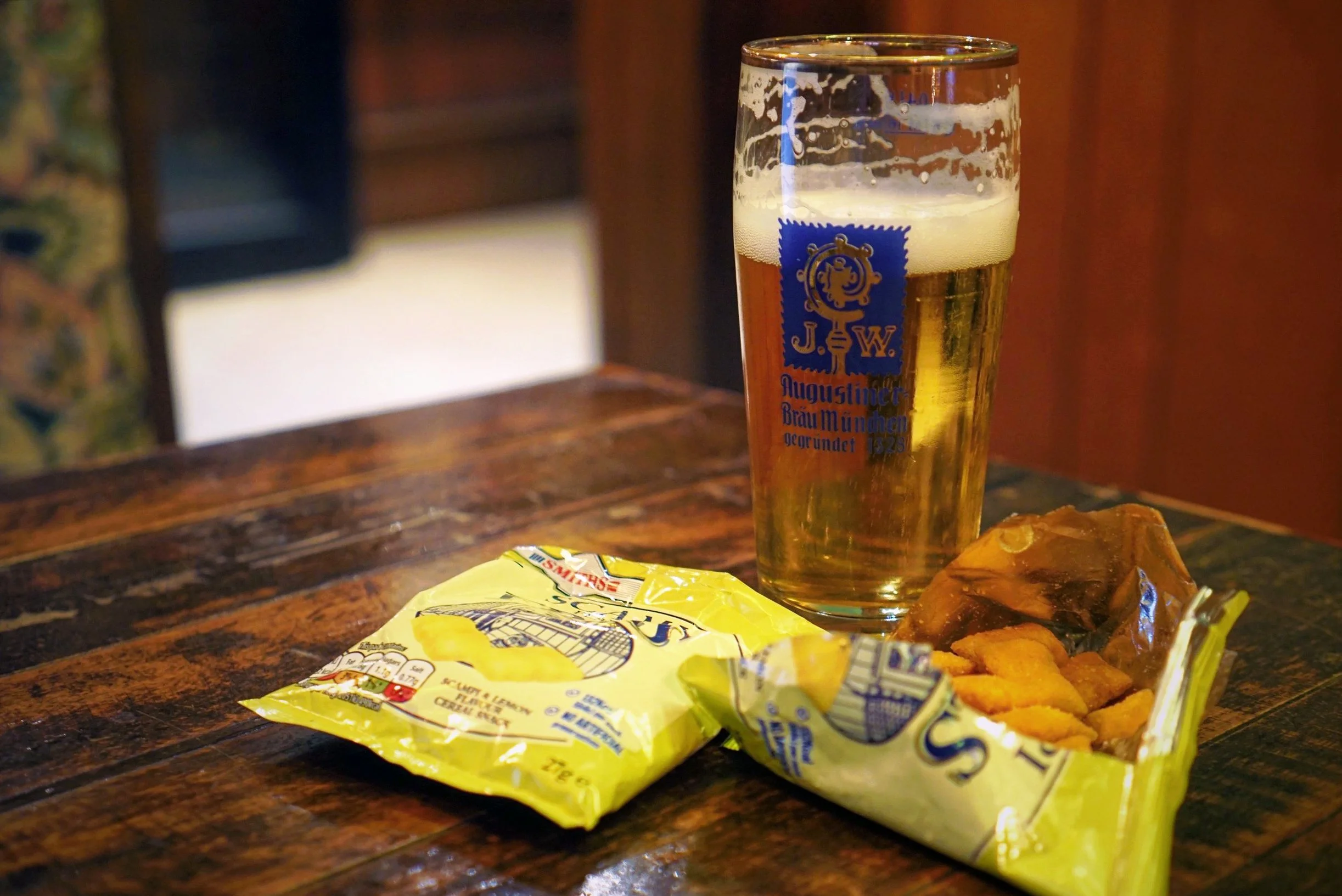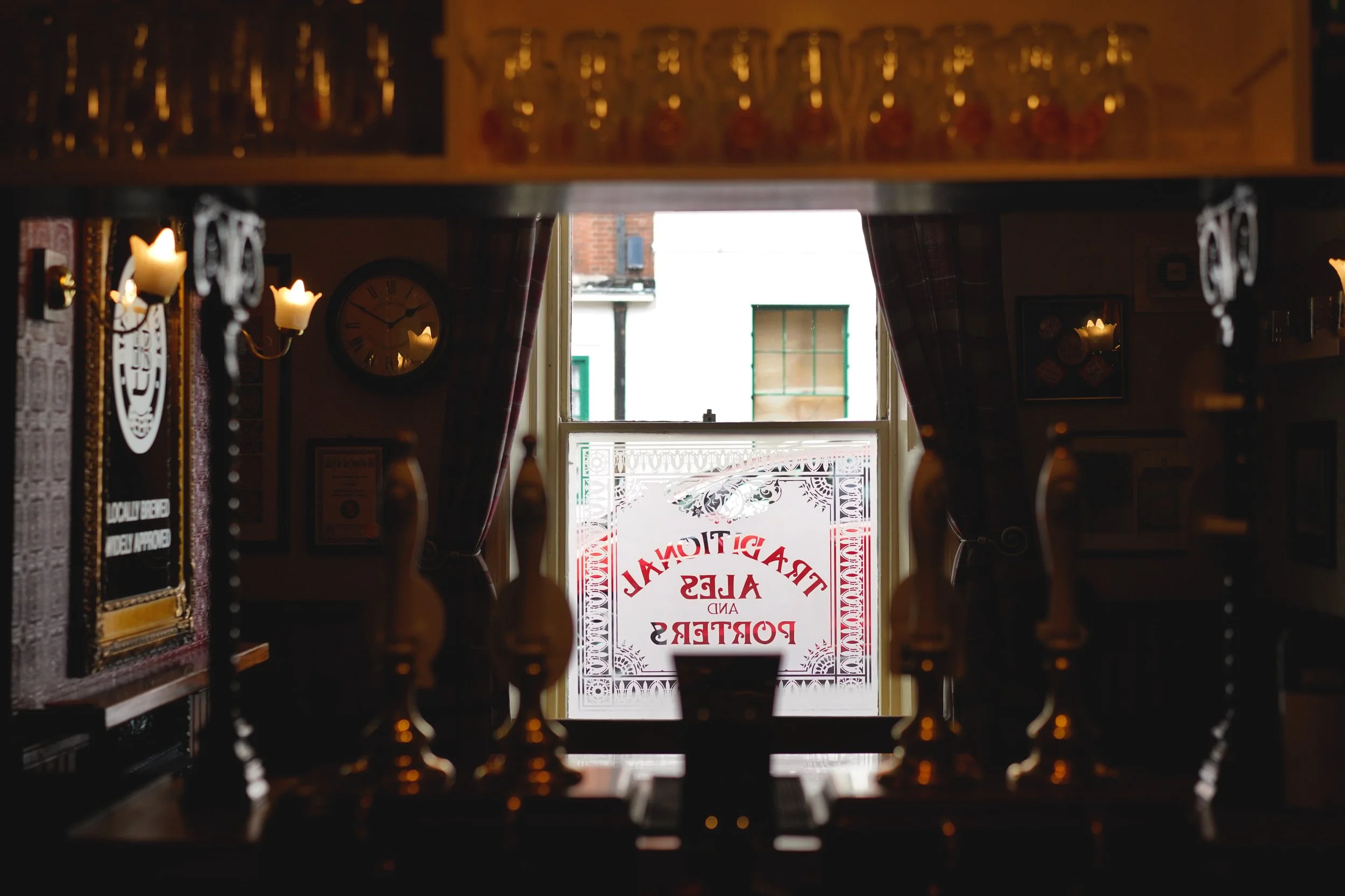This is the End — The Sad Demise of Worthington White Shield
In Britain, we’re wasteful with our national history. There’s so much of it just lying around, getting in the way, and we persist in thinking of it as boring. It’s old rocks; dead white men in powdered wigs; lists of boring dates and names. Instead, we fetishize the new, always looking to be the first with the next big thing.
This creates an environment in which our history is easily discarded or destroyed. And when it vanishes, our cultural attention deficit disorder drives us to shrug and turn back to scrolling on our smartphones.
When one of my all-time top five beers fell victim to this national neurosis last year, it felt like the result of carelessness bordering on professional incompetence.
In August 2023, multinational brewing concern Molson Coors announced it was “pausing” production of Worthington White Shield.
“Pausing.” A curious choice of word, when you think about it. Why not just come out and say what they mean? Maybe because, as they went on to say, White Shield is—or was—“a heritage brand, with [a] particular connection to the great brewing town of Burton upon Trent,” and the decision “will be disappointing to those who have enjoyed White Shield for many years.”
Surely, only a fool would destroy such a brand? So instead, they announced they were merely “pausing” production, with the meaning of the word “pause” being modified from “a temporary stop or rest” (the dictionary definition) to the brand being “out of stock for the foreseeable future” (Molson Coors’ definition.)
The company blamed “a change to our normal production route” for White Shield’s demise. I had to look up what this means. Simplistically, a production route is a summary of the steps that need to be taken to transform raw materials into a finished product. I’ve helped brew White Shield myself. The “production route” is pretty much the same as it is for any other beer. So unless the world’s fifth-largest brewing company (by volume) is claiming that a change to the way they make beer means they can no longer make beer, they’re deliberately misleading us about the reason they’ve stopped making White Shield.
Illustrations by James Albon
The announcement from Molson Coors went on to say it “will continue to explore possible new production routes,” but has cynically ruled out the possibility of letting someone else brew a beer they clearly don’t want to brew themselves, insisting that “the Worthington’s brand remains part of our portfolio.” They then add further insult to injury by saying hey, White Shield may be no more, but “fans will still be able to enjoy Worthington’s on draught in pubs, clubs and bars across the UK.”
The “Worthington’s” referred to here is the 3.6% ABV Creamflow bitter, brewed to a completely different recipe from White Shield (presumably one that is still possible within the parameters of the new production route.) It scrapes a 2.9 rating on Untappd. Molson Coors might as well be saying, “Yeah, we’ve deleted the entire Beatles back catalogue, but fans will still be able to enjoy Paul McCartney and the Frog Chorus.”
But does any of this matter, to anyone but a bunch of ageing ale aficionados?
Here’s why it should: Worthington White Shield is—or was—an India Pale Ale, abbreviated to “IPA,” brewed in Burton-on-Trent and first exported to India and other parts of the British Empire in 1829. The white shield was the family crest, still visible above the door of what used to be William Worthington’s town house in Burton. It appeared as a logo on the beer in the 1870s, and by the end of the nineteenth century drinkers called it “White Shield.” It was officially renamed in 1950.
By this time it was owned by Bass, later Bass Charrington, which went on to become the largest of the “Big Six” commercial brewers that dominated British brewing from the late 1960s until the end of the century. Worthington had once been Bass’ big British rival, so was never a priority for the new company once it became a part of it.
““Molson Coors might as well be saying, “Yeah, we’ve deleted the entire Beatles back catalogue, but fans will still be able to enjoy Paul McCartney and the Frog Chorus.””
Nevertheless, it became a quiet legend. As a revival of interest in traditional British beer styles grew following the birth and rapid growth of the Campaign for Real Ale (CAMRA) in the early 1970s, White Shield gained both notoriety and a cult following as one of only five remaining bottle conditioned ales available in Britain. It was a lifeline in places where cask ale was of poor quality, or non-existent. Pouring it perfectly and leaving the sediment in the bottle became the ultimate test of any drinker or bartender’s skill.
But it still wasn’t Bass. And because of that, White Shield never received the respect or support it deserved from the people who owned it. In 1981, production was moved from Burton’s legendary Union system to the Hope & Anchor brewery in Sheffield. (As the wholesale destruction of Burton’s heritage continues, Carlsberg Marston’s announced it was binning the last surviving Union “set” in the world in February 2024. Although in a refreshingly cheerful turn of events, it was announced that one of these sets was to be installed at Derbyshire’s Thornbridge Brewery the following May.)
When that brewery was closed in 1992, production was shunted to Cape Hill in Birmingham. Bass then showed their total disinterest by contracting production out to King & Barnes in Sussex, in 1998. By this time just 1,000 barrels (288,000 pints) a year of White Shield were being brewed. So when King & Barnes closed down in 2000, many assumed that was the end of a once-great beer.
But the story took a strange twist.
Following the implementation of the Beer Orders in the 1990s, big brewers such as Bass were no longer allowed to own most of the pubs that sold their beer. The idea was brewers would sell their pubs. Instead, pretty much all of the Big Six decided instead to sell their breweries and keep the pubs. Soon, all the biggest brewing concerns in Britain were owned by foreign corporations—companies that had little or no interest or expertise in the British ale brewing tradition. Bass was bought by Belgian brewer Interbrew, later to become AB InBev. But the Monopolies and Mergers Commission intervened, and instructed Interbrew to dispose of the Bass brewery in Burton, plus the Carling and Worthington brands, (but, crucially allowed them to keep the rights to the Bass brand itself.) The whole of the Bass brewing business, apart from Bass, ended up being sold to Coors, now Molson Coors. Confused? You should be.
Steve Wellington had brewed Bass since 1964, and was considered a legend within the industry. Now finding himself employed by Coors and no longer allowed to brew Bass, he persuaded his new bosses to bring Worthington White Shield back home, and let him brew it in an old brewery that was now part of the Brewing Museum in the middle of Burton. (This, the most significant museum of brewing in Britain, was—yeah you guessed it—closed by Molson Coors in 2022.) Largely ignored by management, Steve restored White Shield to its former glory, guiding it to its third win as CAMRAs Champion Bottled Beer of Britain (more than any other beer) and earning himself a Brewer of the Year gong from the British Guild of Beer Writers in the process.
Steve always insisted that the beer was “pretty much unchanged” from the recipe that first went to India. At 5.6% ABV, it was straightforward yet complex. White Shield offered a true journey across the palate, dropping hints of marmalade, toast, bubblegum, treacle and citrus fruit, but tying them all together into something wonderfully smooth. Like a favourite album, just when you thought you knew it inside out, you’d discover something new. I’ve seen grown men weep at what happened when you paired it with Mrs Keen’s cheddar.
And because it was bottle-conditioned, it aged beautifully. Steve once gave me a bottle that was thirty years old. The vibrant orange marmalade notes had gone, replaced by dried fruit and marzipan. It still nagged and urged you to take one more sip, to discover one more layer, even after it was finished.
““Burton’s brewing heritage is disappearing before our eyes. And this matters because without Burton, there would have been no IPA.””
Bizarrely, all this means that to many drinkers the last surviving heritage IPA was, paradoxically, not an IPA at all. It wasn’t hazy and didn’t taste like grapefruit, so how could it be? The American Beer Judge Certification Programme (BJCP)—the self-appointed guardians of beer style definition—would seem to agree. According to their latest guidelines, the IPA category is now “for modern American IPAs and their derivatives,” specifically excluding anything that resembles beers like White Shield that gave the style its name. Apparently, IPA doesn’t even stand for “India Pale Ale” any longer; according to the style guidelines, “the term is intentionally not spelled out as ‘India Pale Ale’ since none of these beers historically went to India, and many aren’t pale.” I’m not making this up. I wish I was. Not least because I would be hailed as the finest satirist of our age.
With craft beer jumping the shark in such spectacular fashion, White Shield didn’t really fit in any longer. But all the nonsense just made me love it even more. And it wasn’t just me: over the last ten years, the question I’ve been asked most often by beer-drinking friends is “Do you know where I can get White Shield? Are they still brewing it?”
Molson Coors don’t understand British ale, and of all the big global brewers, they’re the ones who haven’t really got craft beer either. The real reason they “paused” production of White Shield had nothing to do with “production routes.” It was a marketing decision. There are good people working at Molson Coors who adored this beer, but from a corporate perspective, once the company stopped ignoring it, and once Steve Wellington retired for the final time, they didn’t have a clue what to do with it. Turning a completely invented fake Spanish lager into the most successful beer launch in British history? No problem. Continue the production of a legend to satisfy legions of discerning fans across the world? Nah, too difficult, mate.
Burton’s brewing heritage is disappearing before our eyes. And this matters because without Burton, there would have been no IPA (yes, it was originally brewed in London, but it was the Burton brewers’ version of it that took over the world.) And without IPA, there would have been no global craft beer revolution.
Rumours are now circulating that a deal may be struck, that brewing may after all be licensed out to someone who actually gives a damn about Britain’s brewing heritage. White Shield will come back. It has to. Even in a country as careless with its history as this one. It’s simply too important to vanish into forgotten archives.













